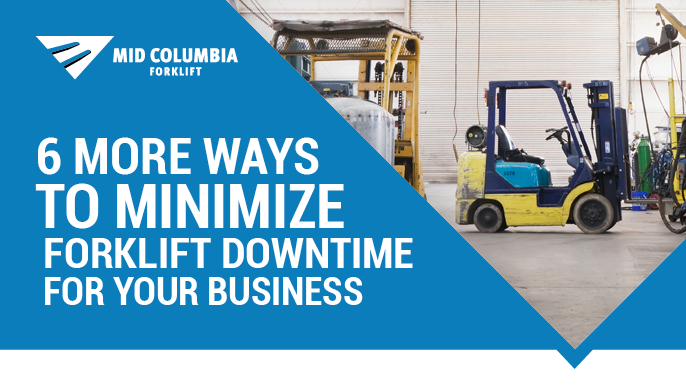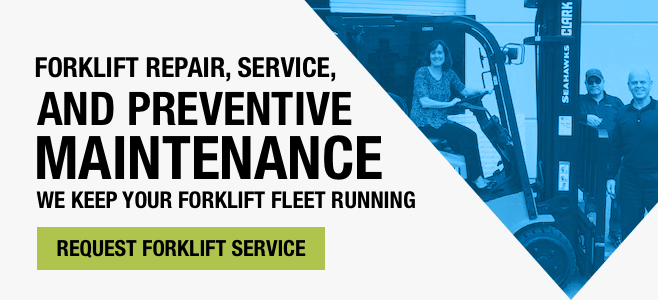6 More Ways to Minimize Forklift Downtime for Your Business
by , on January 29, 2021 at 12:11 PM
 If your forklifts aren’t working properly they’re dragging down your business profits. For busy warehouse managers, keeping equipment properly maintained and functional is key for success. We’ve reviewed top methods for reducing downtime in the past, but there are always more ways to improve your equipment’s performance. Here are 6 more key ways to keep your forklifts running smoothly and moving products.
If your forklifts aren’t working properly they’re dragging down your business profits. For busy warehouse managers, keeping equipment properly maintained and functional is key for success. We’ve reviewed top methods for reducing downtime in the past, but there are always more ways to improve your equipment’s performance. Here are 6 more key ways to keep your forklifts running smoothly and moving products.
1. Know Your Forklifts Inside and Out
Different equipment brands have different quirks and requirements. A Clark forklift’s maintenance interval will not be the same as a Doosan or a Kalmar. Taking a data-driven approach to your fleet management based on different makes and models requirements will keep your forklifts running longer and more reliably. Remember: equipment maintenance is not “one size fits all.” Consult your owners’ manuals and your servicing dealership to make sure your maintenance schedules are in line with the brand’s requirements.
2. Maintain Equipment Maintenance Records
To achieve a data-driven approach, you have to generate data. Maintaining detailed equipment maintenance records is key for effective fleet management. You need those records to highlight trends and potential issues in your forklifts or workplace. If the same repairs are recurring regularly, it can point to an issue with your warehouse or a need for retraining. Pay close attention to where, when, and how equipment is damaged to identify more issues.
3. Refresh Your Supplies on Hand
Remember those equipment maintenance records? You can use the trends from frequent repairs and part replacements to optimize your parts and other supplies. Avoid waste by only keeping needed components on hand. An annual review of repair trends can help you plan the next year’s budget and what parts need to be kept in stock. Don’t overstock items that you don’t need - trust in your data.
4. Optimize Your Forklift Replacement Schedules
Keeping forklifts in your fleet beyond their economic lifespan is a waste of money. While no set guideline applies to all forklifts, most typically last from three to seven years, depending on the application. Essentially, there is a break-even point in any forklift’s lifespan, where your maintenance costs have not increased beyond its effectiveness. If your forklifts are experiencing frequent breakdowns, it may be a sign to replace your equipment more frequently.
5. Replace Damaged Pallets
Damaged pallets can be a main contributor to forklift downtime. Debris from broken pallets can cause damage to tires and other key forklift components. In addition to a warehouse maintenance and floor cleaning schedule, damaged racking, pallets, and other materials should be replaced to avoid extra downtime.
6. Select Expert Material Handling Partners
Partnering with the right material handling supplier is a surefire way to minimize your forklifts’ downtime. The right provider will work with you to identify possible solutions and guide you towards better methods of preventing forklift damage. Look for partners with a reliable rental fleet to help offset unexpected downtime in your fleet.
At Mid-Columbia Forklift and MidCo Material Handling, we work with our customers to deliver the product, services, and solutions they count on. Contact us online to learn more about our company and how we can help optimize forklift operations. You can also reach out to our team of forklift experts at the location nearest to you:
Auburn 253-854-5438
Pasco 509-547-7413
Wenatchee 509-663-9009
Yakima 509-457-5137





